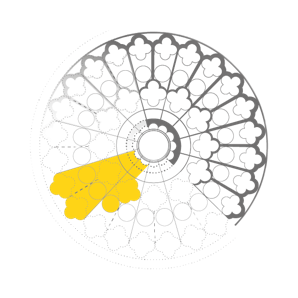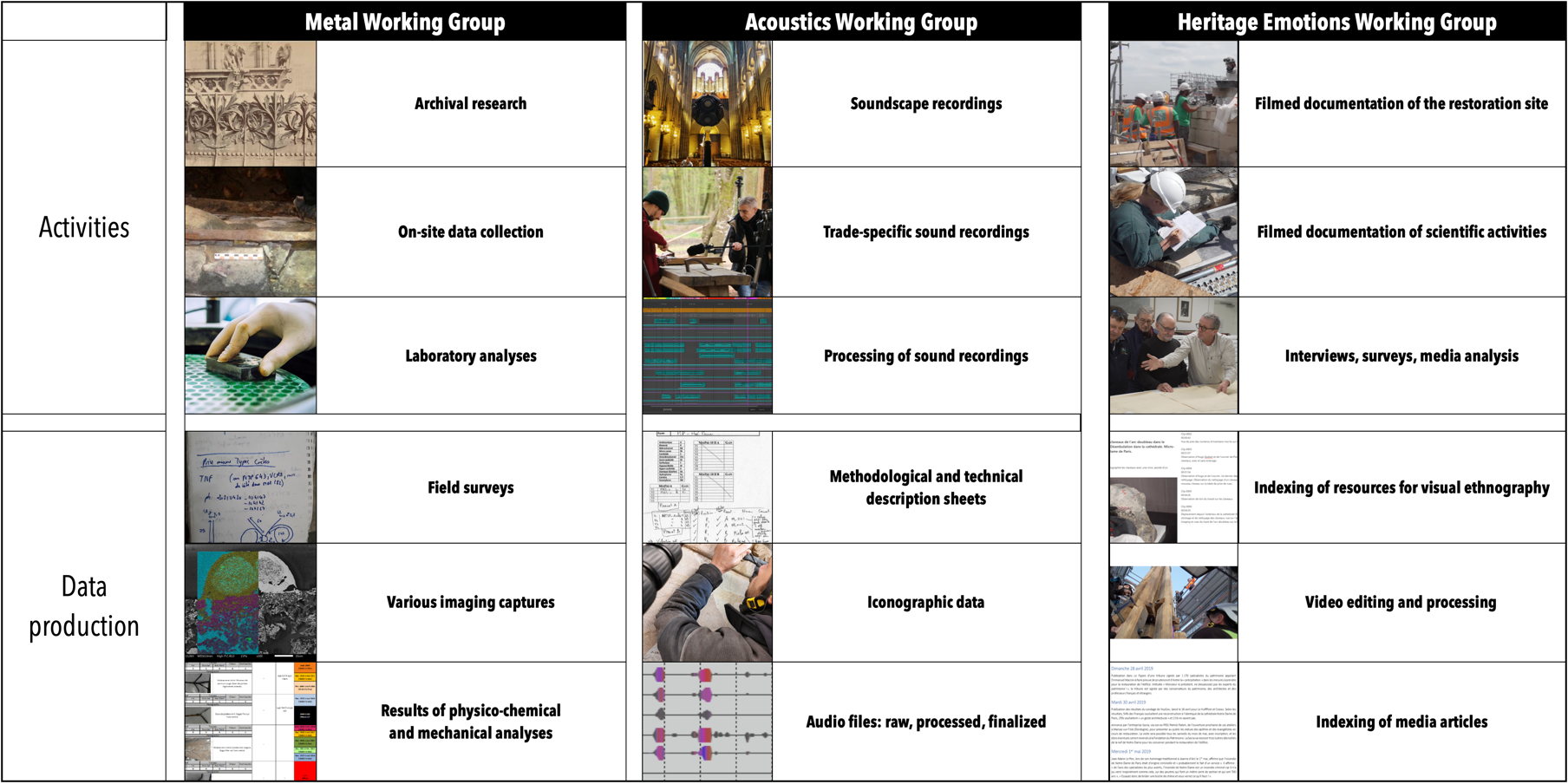

n-Dame_Heritage
n-Dimensional analysis and memorisation ecosystem
for building cathedrals of knowledge in Heritage Science


n-Dame_Heritage
n-Dimensional analysis and memorisation ecosystem
for building cathedrals of knowledge in Heritage Science
data corpus
digital resources to document ongoing projects and to experiment with the integration, analysis, and correlation of data
Digital resources on our platform cover a wide range of temporal states and data types related to the cathedral, and they continue to grow.
Initially, we collected data from cultural institutions, laboratories, and companies, with strong support from public authorities.
This data includes over 200,000 photographs documenting the cathedral before and after the fire, as well as 3D point clouds from laser scans, such as the critical survey by Andrew Tallon of the Vassar College in New York . We’ve also gathered more than 300 technical drawings and over 5,000 archival documents covering different periods of the cathedral’s history. In parallel, the scientific project has generated new data in several knowledge domains. A key challenge has been to understand, structure and integrate this data across disciplines.

Data collected from cultural institutions, research laboratories, and companies : +200,000 photographs (before and after the fire, during restoration); +5,000 3D laser point clouds (before and after the fire, during restoration); +300 technical drawings (before and after the fire); +5,000 documentary sources (archives, bibliography, iconography) concerning the history of the cathedral.
Data produced by the Notre-Dame scientific project: Materials Working Groups (Stone, Metal, Wood, Glass, Decorations): bibliography, material analyses, technical studies, photographs, …; Structure and Acoustics Working Group: material analyses, acoustic acquisitions, mechanical and acoustic simulations, …; Heritage Emotions Working Group: press and web resources, interviews, video documentaries, citizen surveys, …; Digital Data Working Group: multi-scale 3D digitizations (from architecture to vestiges), 3D reconstructions of hypothetical states, …
The variety of data produced by the scientific project reflects its multidisciplinary nature, ranging from material analysis, such as metal, to more intangible dimensions like acoustics and heritage emotions. These three working groups, out of the nine involved, highlight the wide spectrum of data types.

Starting with the Metal Working Group, their focus is on the cathedral's material components. They’ve gathered archival documents, conducted on-site data collection, laboratory analyses, and imaging. The resulting data includes physico-chemical and mechanical analyses, essential for understanding the properties and degradation of the cathedral's metal elements. The Acoustics Working Group extends beyond the material to capture and analyze the cathedral's soundscapes over time, as well as the sounds produced by craftsmen during the restoration. They produce raw and processed audio files, along with detailed methodological documentation of the acoustics capture devices. This work preserves and study the sensory experience of Notre-Dame, an often overlooked but critical aspect of its heritage. Lastly, the Heritage Emotions Working Group focuses on the human dimension. They document the restoration and scientific activities through filmed footage, interviews, and media analysis. Their data captures the emotional and cultural responses to the project, enriching the understanding of the cathedral’s broader societal impact.
A fundamental aspect of our project concerns the transition from digital data to multidisciplinary knowledge. This involves integrating interpretive layers from the researchers studying and deriving insights from these objects within the digitizations of material objects. To achieve this, we conducted large-scale experiments with a 2D/3D annotation method using the Aioli platform, developed in my laboratory, to spatialize observations and related data.
This work allowed us to exploit tens of thousands of spatially organized photographs, representing multiple temporal states. We defined descriptive structures by thematic areas, integrated observations from various researchers, and paid particular attention to nomenclature and controlled vocabularies.
One of the key tasks was translating the entire diagnostic assessment and condition report of the cathedral. This included documenting deterioration patterns, past restorations, stained glass analysis, and instrumental measurements like radar scans and stratigraphy. These detailed annotations not only capture the state of the structure after the fire but also integrate the first intervention proposals defined by architects working on the restoration.
Each of the annotations, totaling over 13,000 across more than 280 collaborative projects, is associated with structured descriptions or detailed comments, often including attached documents like pdf, images, videos, audio, tables and so on.
On top of the initial descriptive layer, developed for diagnostic purposes and covering the entire cathedral, additional layers from the scientific action have progressively been added. These annotation projects evolve in parallel, covering different aspects that overlap within the space of the cathedral.
CNRS and Ministry of Culture charter for data sharing and re-use
Produced data will be available in open access in accordance with the provisions of the Etalab 2.0 license from 2025